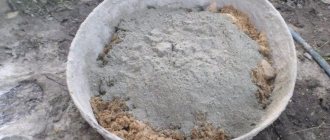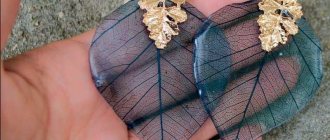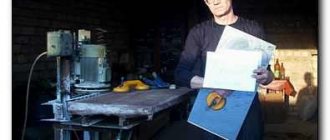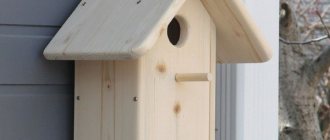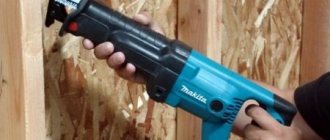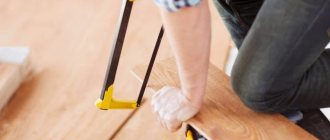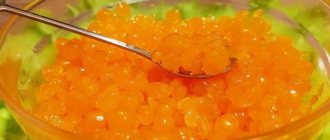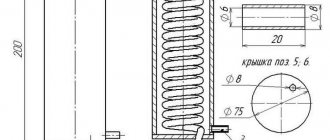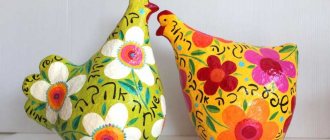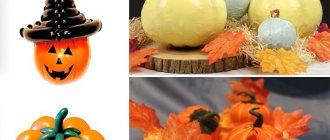Among the variety of fungicides, a 3% solution of copper sulfate stands out, which is very easy to prepare and use.
Dear readers!
For you, we have created communities on social networks in which useful articles and interesting ideas are published several times a day! Subscribe and receive useful content in a convenient format! The drug is suitable for most plants and shows excellent effectiveness. However, there are some limitations to its use.
We’ll talk about everything you need to know about a 3% solution of copper sulfate in today’s article.
In what cases is a 3 percent solution of copper sulfate used?
Usually they try to prepare copper sulfate (copper sulfate) at 3 percent, since this concentration is the most effective.
The drug destroys mold and mildew and protects trees and shrubs from them.
The diluted powder can be used to process saw cuts when pruning trees. In addition, it increases the fire-resistant qualities of wood.
Using the product, you can disinfect the soil before sowing seeds and planting seedlings.
Few people know, but copper sulfate is used as a fertilizer for fertilizing peat soils.
ON A NOTE. By using 3% copper sulfate in early spring, you can destroy those hibernating in the bark and soil.
Below we will consider how to use copper sulfate of 3 percent concentration for various fruits and vegetables.
Roses
The rose garden is treated in the fall against parasites and fungal infections. To do this, prepare a mixture of 3 percent concentration.
The treatment is carried out after the end of flowering, just before covering the flowers for the winter. To get a greater effect, use a fine spray for spraying.
Try to treat all shoots and soil under the bush.
You can cover a rose bush for the winter only after the liquid on the shoots has completely dried.
IMPORTANT! But for spring treatment, a more gentle 1 percent solution of copper sulfate is made.
Treatment of walls in outbuildings
Outbuildings (especially wooden ones) are often affected by mold and mildew. You can save them from rotting using a 3% solution of copper sulfate.
Before applying the fungicide, the walls are prepared. First, you need to clean off any buildup on the trim, paint, or plaster. Sand particularly affected areas with sandpaper.
The next step is to use a soap solution. Wash the walls and let them dry. After this, spray with a 3 percent composition.
Tilling the soil in the garden
The soil under trees and shrubs often becomes a refuge for a huge number of spores of fungi, bacteria, viruses, eggs and insect larvae.
To destroy all pathogens in the spring, before the onset of active growing season, the soil is sprayed with 3 percent copper sulfate.
IMPORTANT! The treatment is carried out before the plants wake up. In addition, this concentration is only used if you are not growing anything else between the trees and shrubs.
Where is it used?
In my opinion, the application is the most interesting thing. The theory, of course, is also interesting, but what can you do with it without practice? Let's look at where copper sulfate is used. First briefly, and then some points in more detail. So:
- in horticulture to control plant pests;
- again, in gardening, as a fertilizer - a source of copper and sulfur;
- in the chemical industry for the production of various compounds;
- to combat mold and rot in homes;
- in alternative medicine;
- as an emetic;
- as a food additive (yep, just like sulfur oxides).
For me personally, I just love using it for various home experiments, of which there are quite a few. Including for growing beautiful crystals. I plan to make several separate articles about this.
By the way, it is very easy to buy this substance in garden stores, especially now, at the height of the summer season. Walk into any store that sells fertilizer and you will immediately see bags of bright blue powder. Their packaging can be completely different. As a rule, this is from 200 to 500 grams.
Well, now let's learn more about the application.
How to make a working solution of 3 percent copper sulfate solution, recipes
Every summer resident and gardener should be able to prepare a 3% solution of copper sulfate. There are several recipes.
How to cook in the “classic” way
- Pour 300 grams of the drug into a bucket.
- Heat the water to about 50 degrees.
- Pour the powder into 1.5 liters of hot liquid and stir thoroughly.
- Leave for a few minutes.
- Add another 8.5 liters of hot water. Stir again. The mixture must be homogeneous in composition.
How to cook for 1 liter
Sometimes it happens that 10 liters will be too much. In this case, it is better to prepare 1 liter of the drug. To do this, dissolve 2 teaspoons (without a slide) in a liter of hot water.
What is this substance
It is easy to recognize by its appearance - bright blue crystals, as if soft to the touch. I just don’t recommend touching it with your hands - if you can’t wait, you can stir it with a stick or spoon, but not with your hands. However, the color can be any - from bright blue to pale blue.
If you imagine yourself as a chemist, then you will need to call it divalent copper sulfate. Why then vitriol, what is this word?
Vitriols are substances formed by divalent metals and a residue of sulfuric acid. Moreover, the composition of these substances must also include several water molecules. For example, there are five of them in copper sulfate.
There is no need to remember this if you are not a chemist, so don’t be alarmed, I will try to explain it as simply as possible.
It dissolves well in water and produces a nice blue solution, the saturation of which depends on how much of the substance you took and dissolved.
How to prepare a 3 percent solution of copper sulfate for 5 liters of water
In households, 5 or 6 liter sprayers are mainly used. Therefore, it is important to know the proportions in order to prepare 3 percent copper sulfate per 5 liters of water.
You will need 150 grams of powder and 5 liters of water. We heat the water to 40-60 degrees.
Next, take a glass jar into which we add all the powder. Fill it with a liter of hot liquid and mix thoroughly.
Let the mixture “calm down” and pour it into the sprayer. Next, add another 4 liters of hot water and mix again. Tighten the stopper and shake until the solution finally reaches the same consistency.
Let it cool a little and process the plantings.
How to make a solution of copper sulfate for spraying plants
A 3 percent solution is “heavy artillery.” A drug that literally “burns out” all living things. Therefore, it is used for processing during periods when plants are still “sleeping”. The rest of the time, more gentle solutions are used.
- Pear. You need a 1% solution (50 g per 5 liters of water). One five-liter tank is enough for a large tree.
- Apple tree. Treatment with a 1% mixture is required (100 g per 10 liters of water). The consumption rate is from 2 to 5 liters per 1 tree.
- Stone fruit trees are treated with even weaker solutions. 70 grams of copper sulfate are dissolved in a 10-liter bucket of water.
ON A NOTE. The drug helps in the fight against stone fruit moniliosis.
- Currant. Prepare a 0.5 percent solution (50 g per 10 l)
- Raspberries. 50 g per 10 l.
- Gooseberry. 50 g per 10 l.
IMPORTANT! To treat one shrub you need only 1.5 liters of the finished product. Therefore, you must initially think about how much mixture you need to prepare.
Housekeeper's Assistant
Copper sulfate, as a toxic chemical, perfectly fights mold and rot in rooms. Although, to be honest, from my experience, I would advise not to split hairs, but to buy a special anti-mold remedy, but if you are too bored with your life or too lazy to go to the store or for some other reason... in general, you can use copper sulfate.
First, wash the walls thoroughly and dry them.
Then prepare a solution of 20 grams of the substance per 1 liter of water, thoroughly treat the wall and let it dry so that a protective film forms on it. They say it helps too. I won't lie, I haven't used it.
Well, of course, find out the reasons for the appearance of mold - after all, it will be more effective to get rid of the causes than to get rid of the consequences.
How to prepare a 3 percent solution for treating planting material before planting
Planting material is often treated with copper sulfate. To protect the roots of future fruit trees and berry bushes, as well as potato tubers.
But a 3% solution is too strong for this procedure. Therefore, a composition with a concentration 3 times less is used.
100 grams of copper sulfate are diluted in a bucket of hot water. After that, the roots of the seedlings are lowered into the bucket one by one for 2-3 minutes. Then the root system is washed and planted.
IMPORTANT ! Root treatment with a 3% solution cannot be carried out. This will kill the plants.
Patient's assistant (full head)
When I was looking for material for this article, I found several articles about how copper sulfate is used in NOT traditional medicine.
I’ll say right away that I have a sharply negative attitude towards these methods, at least as a chemist. I don’t know what doctors will say about this, but I think they won’t be happy either.
I will briefly list what I came across: it treats epilepsy, radiculitis, arthritis, tumors, including malignant ones, has a sedative (calming) effect, strengthens the immune system, eliminates insulin dependence, eliminates the addiction to smoking, treats fungal nail diseases.
Let me clarify once again - this is alternative medicine, which in this particular case with this chemical substance, I personally very much question. Well, perhaps, with the last diagnosis in the above list, I would have thought about it, but everything else...
How is this “unique remedy” used?
- drink the solution;
- take baths (and, oddly enough, for diabetes);
- prepare antifungal ointments and solutions;
- prepare warming ointments;
- They put cigarettes next to the vitriol.
I won't go into detail. For those who need it, the entire World Wide Web is at your service. But I don’t want to sign up for such adventures yet.
Perhaps I will seem too harsh and categorical to someone. Perhaps you yourself were treated in this way and recovered (just don’t talk about the second cousin of your wife’s neighbor’s brother) - share your experience in the comments, it will be useful and interesting.
How to use the solution correctly
First, the solution must be prepared correctly. The liquid must be heated to 50 degrees (hot). This is necessary so that the powder dissolves well. Make sure there are no lumps or sediment left.
The finished liquid must be used within 10 hours, that is, all work is completed in one day.
Set the sprayer to the finest spray possible. This is how a solution of copper sulfate will show the greatest effectiveness.
When spraying the root system or soaking the tubers, be sure to rinse with clean water. When treating the walls of outbuildings, you need to let the composition dry and only then apply paint or plaster.
How to grow crystals yourself from ordinary table salt and water?
How to grow a crystal using salt? Crystals are obtained from both table salt and sea salt. Many people prefer the latter option, because stones made from sea salt are more durable, and the maturation time is slightly reduced.
Salt crystal
Growing a crystal step by step (see video):
- take a clean container, pour water that has undergone the distillation process into it;
- add a lot of salt (you will have to make an effort when stirring);
- after the salt has been mixed, the solution must be kept in a steam bath;
- Cool the salty liquid and pass through filter paper to separate the sediment;
- take a crystal of salt, tie it to the end of a thread and place it in the strained solution (instead of a salt crystal, you can use a small plastic ball or cube, previously soaked in the solution and dried);
- tie the opposite edge of the thread to a stick or pencil, the length of which exceeds the diameter of the neck of the container;
- place a stick with a thread on the neck of the dish so that the crystal hangs over the solution;
- cover the container with paper or breathable fabric;
- place in a place not subject to temperature changes.
The benefits and harms of copper sulfate solution
First about the benefits:
- It is a powerful fungicide that kills many pathogens.
- Copper sulfate solution is suitable not only for destroying microorganisms, but also against pests.
- Copper is an essential trace element for plant life, so copper sulfate can also act as a fertilizer.
Now about the harm:
- In excess quantities, copper is toxic and harmful to cultivated plants.
- The accumulation of copper in plant tissues and soil affects the quality of fruits.
- If inhaled and enters the esophagus, it causes intoxication.
Precautions for use
Preparing a working solution is only half the battle. We must not harm the plants, but, first of all, ourselves.
It is very important to take precautions because copper sulfate is toxic.
- Use glass or plastic containers. Metal containers cannot be used. Only enamel cookware, but make sure there are no chips. The vitriol will react with the metal and oxidation will occur.
- Do not dilute the product indoors, especially in residential areas and in the kitchen.
- Be sure to wear gloves, a mask, safety glasses and closed clothing. If you spray tall trees, wear a raincoat.
- Do not allow other people or pets to be present when treating with copper sulfate.
- If the solution gets into your eyes, rinse them with plenty of clean water. If you accidentally drink vitriol solution, call an ambulance immediately.
- When using the product, do not eat, drink or smoke.
Growth and change of crystals over a long period of time
I prepared a supersaturated solution from filtered water and threw a few pinches of copper sulfate into it. I covered the container with a dark thick cloth and put it in an unlit place. I left all this for exactly 2 months. During this time I did not touch the vessel or remove the fabric.
Imagine my surprise when, upon taking out the jar, I saw many large crystals of irregular shape (Figure 19). You can also see that the small amount of solution remaining after these crystals formed has turned green and cloudy.
Figure 19. Crystals formed in two months
Thus, comparing the sizes of crystals grown in purified and tap water (Figure 20), we can conclude that crystals in purified water grow faster and are larger than in tap water. It is not possible to grow large crystals in mineral water at all.
Figure 20. Comparison of crystal sizes grown in purified and tap water
Conclusion
At first, a few of the randomly moving molecules or atoms of the solute assemble in roughly the order needed to form a crystal lattice. Such a group of atoms or molecules is called a nucleus. Experience shows that nuclei are more likely to form if there are any crystallization centers in the solution. The centers of crystallization can be dirt on the walls of the container with the solution, dust particles, small crystals of the dissolved substance, so if the container is not clean, then the crystals grow on the bottom and walls of the container.
Copper sulfate is a chemically active salt. That is why in the experiment on tap water the crystals grew more slowly than on purified water that did not contain other salts dissolved in it. Tap water, firstly, contains dissolved salts and, secondly, can be highly chlorinated.
Impurities (especially carbonates in hard tap water and salts in mineral water) enter into chemical reactions with copper sulfate, which greatly inhibits or stops the growth of crystals. My work has practical significance because research materials can be used to prepare for lessons and to prepare for exams. The goal of the work has been achieved. I learned how to grow copper sulfate crystals.
Common mistakes
- Using cold water. The powder dissolves poorly in it, and a working solution cannot be obtained.
- An attempt to prepare a solution in a metal container. An oxidation reaction occurs and the mixture becomes unusable.
- Incorrect application time. It is necessary to spray the plantings with a 3 percent solution of copper sulfate before the buds open, otherwise there is a high risk of harming the trees.
- Using an “expired” solution. The shelf life of the finished mixture is no more than 10 hours, so experienced summer residents advise preparing the solution and using it immediately.
- Spraying in inappropriate weather. It is better to spray in cool weather, but the extreme mark is +30. If the air temperature is higher, then copper sulfate cannot be used. There should also be no wind or rain in the next 6 hours.
- Spraying of cultivated plants during the active growing season. The 3 percent composition is very strong. If you need to treat plants in the summer, then much more gentle formulations are prepared.
- Tilling the soil in the garden and in the greenhouse with a 3% composition. This cannot be done. Use formulations of lower percentage concentrations.
Other areas of application
I'll tell you about them in general terms. These are: the chemical and food industries, as well as use as an emetic.
In chemistry, this substance is the “source” for many processes of inorganic synthesis. In particular, the process of producing acetate fiber is also not complete without copper sulfate.
As for the food additive, its number is E519. Due to its toxic properties, copper sulfate is used precisely as a preservative. Sometimes also as a color fixative, although lately it has become less and less common.
But as for an emetic, then, of course, there is nothing better than potassium permanganate. But if it so happens that you don’t have it at hand, but you do have vitriol, then you can use it, but very carefully and in very, very low concentrations.
I sincerely wish you never find yourself in such a situation that you have to use it!
Answers to frequently asked questions
Is it possible to treat plants with a 3 percent preparation?
No, 3% is too high a concentration. Reduce it to 0.5 - 1%.
How to prepare a working solution?
For 1 liter of water you need 30 grams of product. You need to use very warm, almost hot water so that the powder dissolves.
How else can you use a 3 percent mixture?
If wooden buildings are affected by fungus, you can treat them with the product.
Useful tips
The rate of the crystallization process is directly affected by the saturation of the solution. After a couple of days, you can remove the crystal from the prepared solution and change the solution to a more saturated version.
Growing crystals is a fascinating process that allows the younger generation to develop a cognitive interest in natural science subjects.
If the process is too slow, you can expect to get one large crystal. At a high rate of crystallization, there will be many small crystals among the products.
